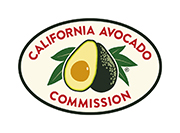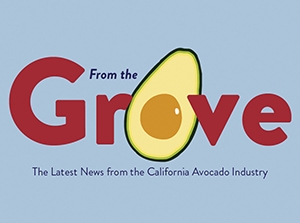Spring Assessment of Avocado Groves
It’s important to walk your avocado groves, make observations and record the specific details about the state of your avocado trees year-round. This allows you to track changes over time and review your cultural management decisions.
What should you look for and record in spring?
- Note how the avocado trees have come through winter. Start by observing the health of the canopy. The canopy of an avocado tree is often a good first indicator of problems with avocado roots or trees, and monitoring the general health of the canopy is a good way to follow the trees’ overall health at flowering and fruit set. The health of the canopy at these stages should provide an indication of the cropping potential of the trees.
- Over winter, roots and leaves degrade because of over watering, soil disease pressure, cold temperatures and photo-oxidation (too much light for the temperature). If these issues have plagued your trees during the winter, very often the canopy of the tree will show less than ideal leaf health — greenish-yellow or yellow leaves, small leaves, or fewer and fewer leaves on the tree.
- Assess the avocado flowering stage. Blossoming of California avocado trees can occur from late winter through early summer, but most harvested fruit develop from flowers that are pollinated during two months in spring. If you are placing bees in your grove it’s best to do so early in spring. In order to have good avocado crops, the tree has to produce flowers with good potential to set fruit. Note the timing of flowering — the number of weeks over which the trees flower — and the weather during flowering. Also look for thin "weedy" short shoots pushing flowers only from the tips as this can be a sign that the tree is under stress.
- Monitor bee activity. Bee activity is a good indicator of the potential strength of the fruit set. Generally, the more bees the greater the amount of pollination.Too few bees working on the flowers can indicate a poor fruit set even if flower numbers are high.
- A simple way to estimate how many bees are active on the trees is to count the bees while walking slowly around a tree in a minute. Fewer than 10 bees per tree is less than ideal, and could suggest poor fruit set if further cultural management practices to aid in pollination are not taken.
- Look for freeze damage. Cold winter temperatures can damage the flowering potential of avocado trees. Generally, healthier avocado trees can better tolerate cold temperatures. To assess your frost management practices and to determine if cold temperatures have affected the potential avocado crop, look for cold weather damage. Sometimes freeze damage is severe enough to be easily identified on leaves, shoots, fruit and developing flowers. However, some freeze damage is hidden and may result in poor fruit set.
- Assess the commercial size of your avocados. Commercial avocado success is a blend of how much avocado fruit your grove produces and the size of that fruit. Fruit that are small in spring can often be left on the tree to increase in size to meet market requirements. However, leaving crops of mature fruit on the tree can also reduce fruit set for the next year because the mature crop and newly setting crop compete for tree resources. Harvesting some of the mature fruit before or during flowering and fruit set can be useful in reducing the competitive effects of the mature crop.


